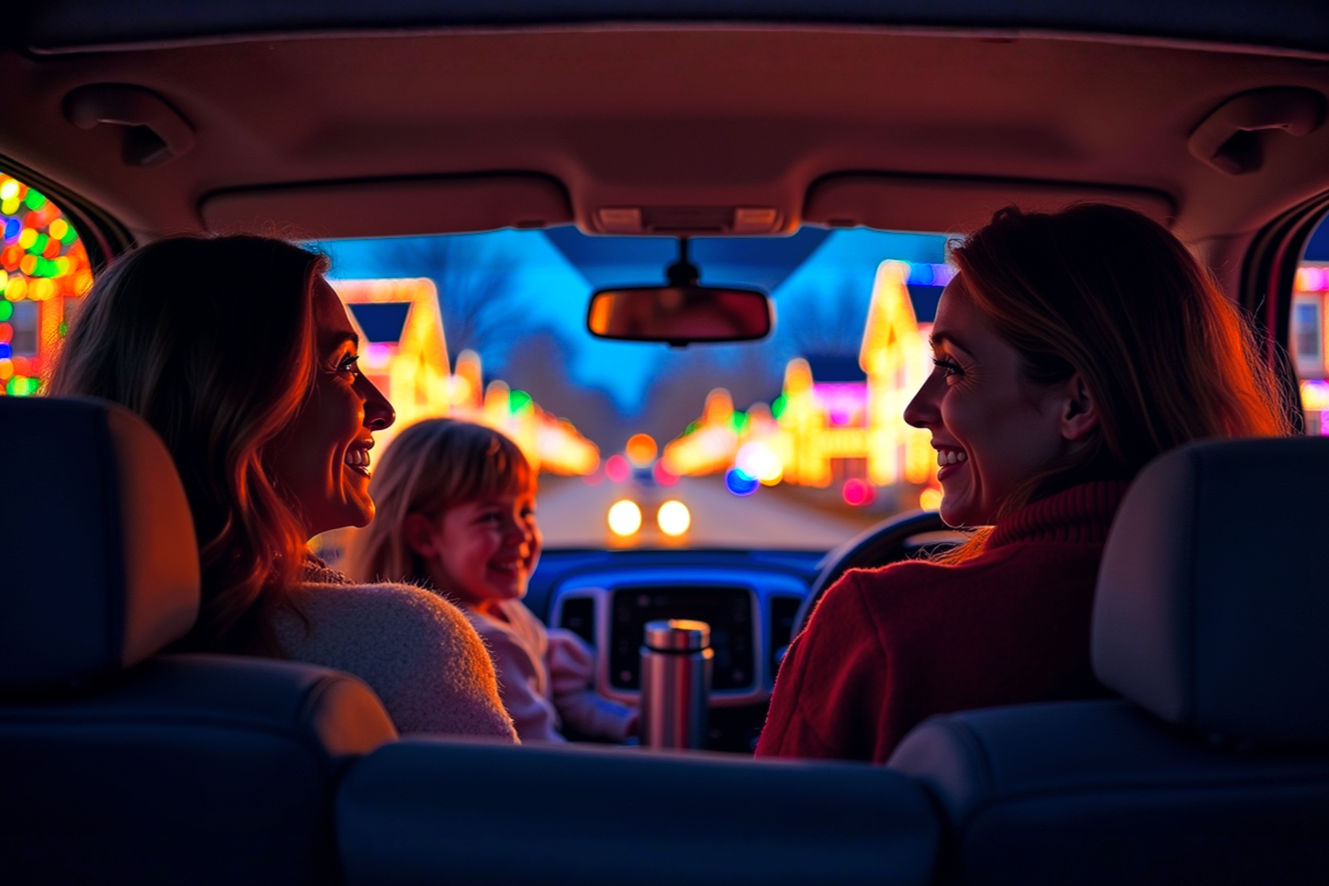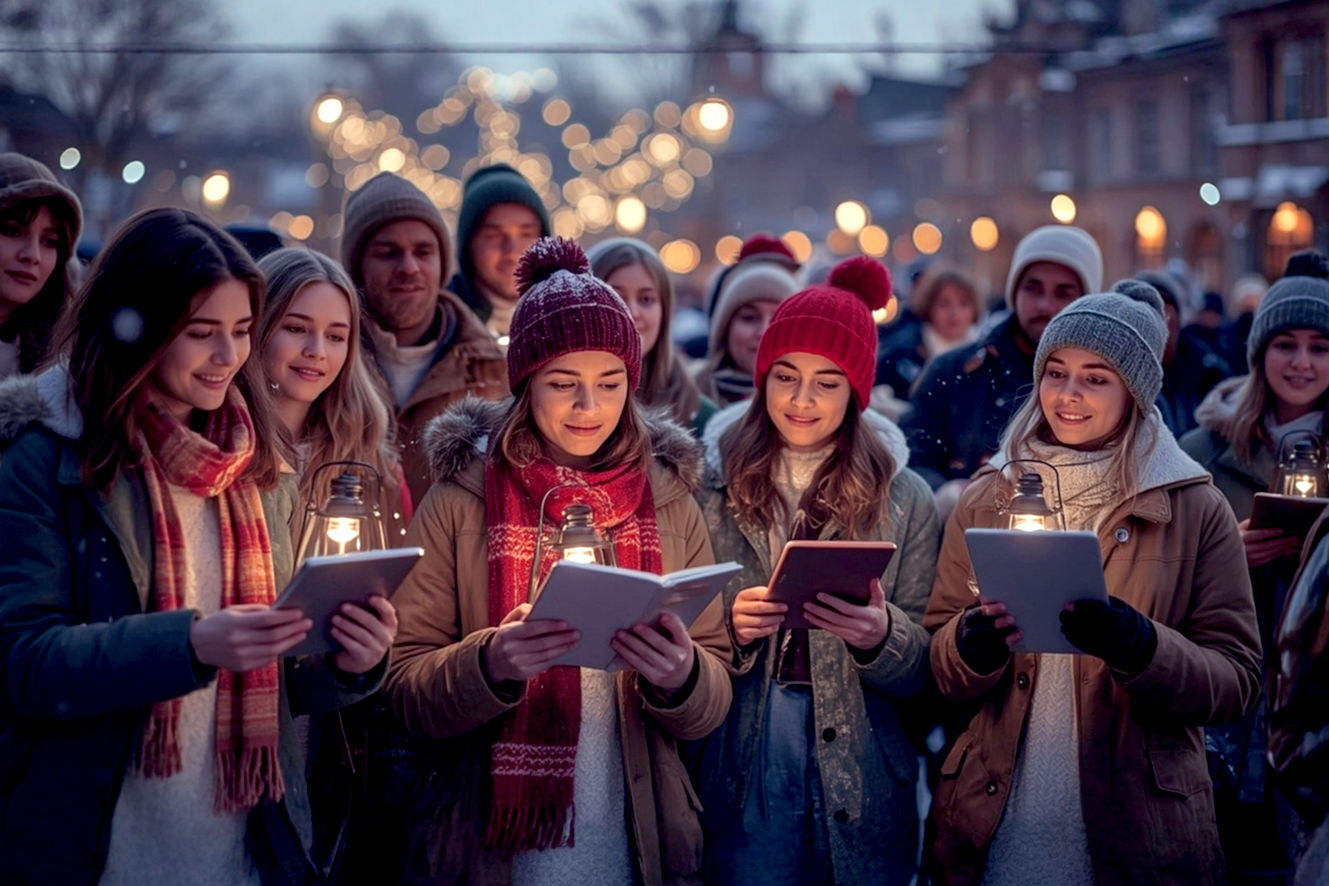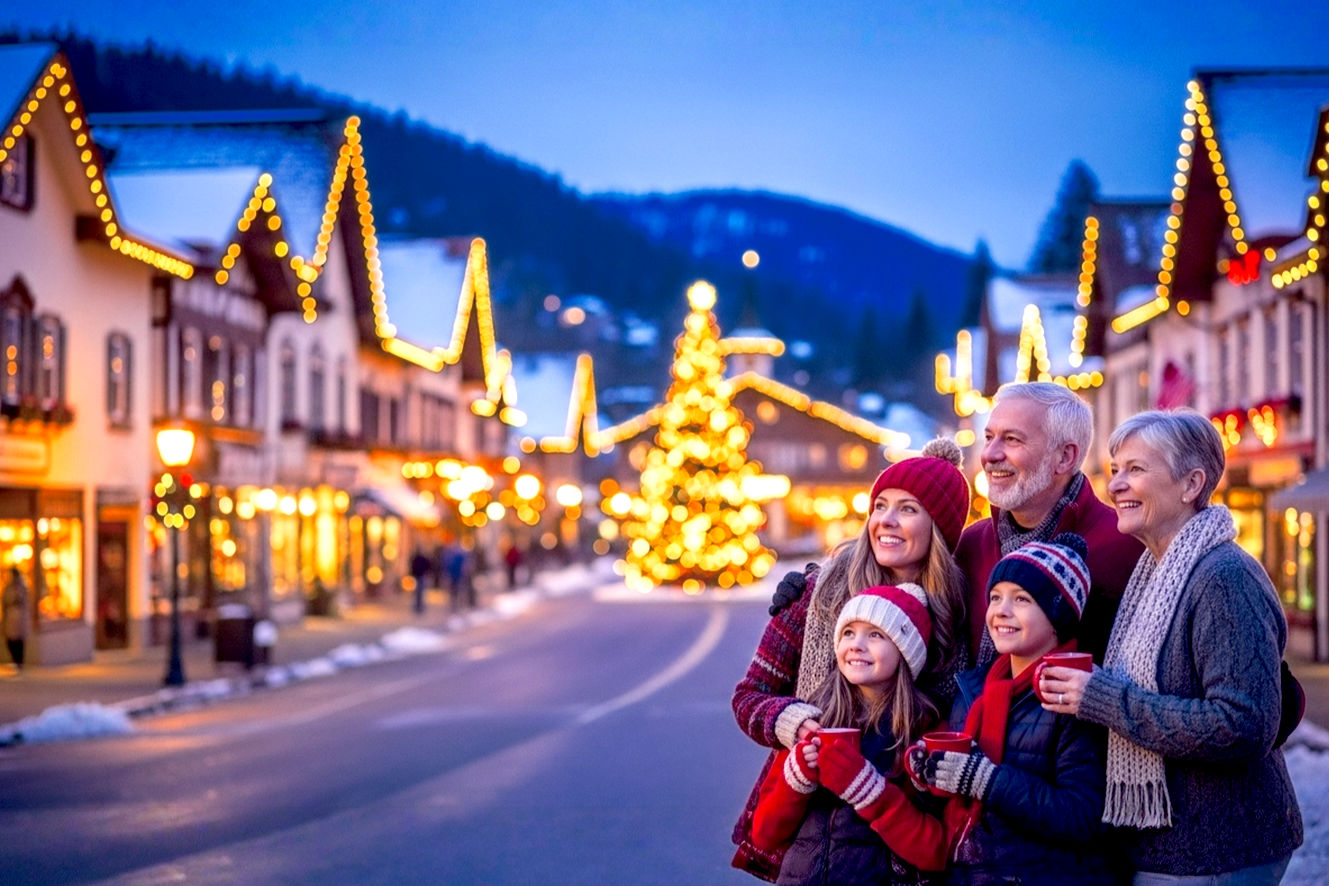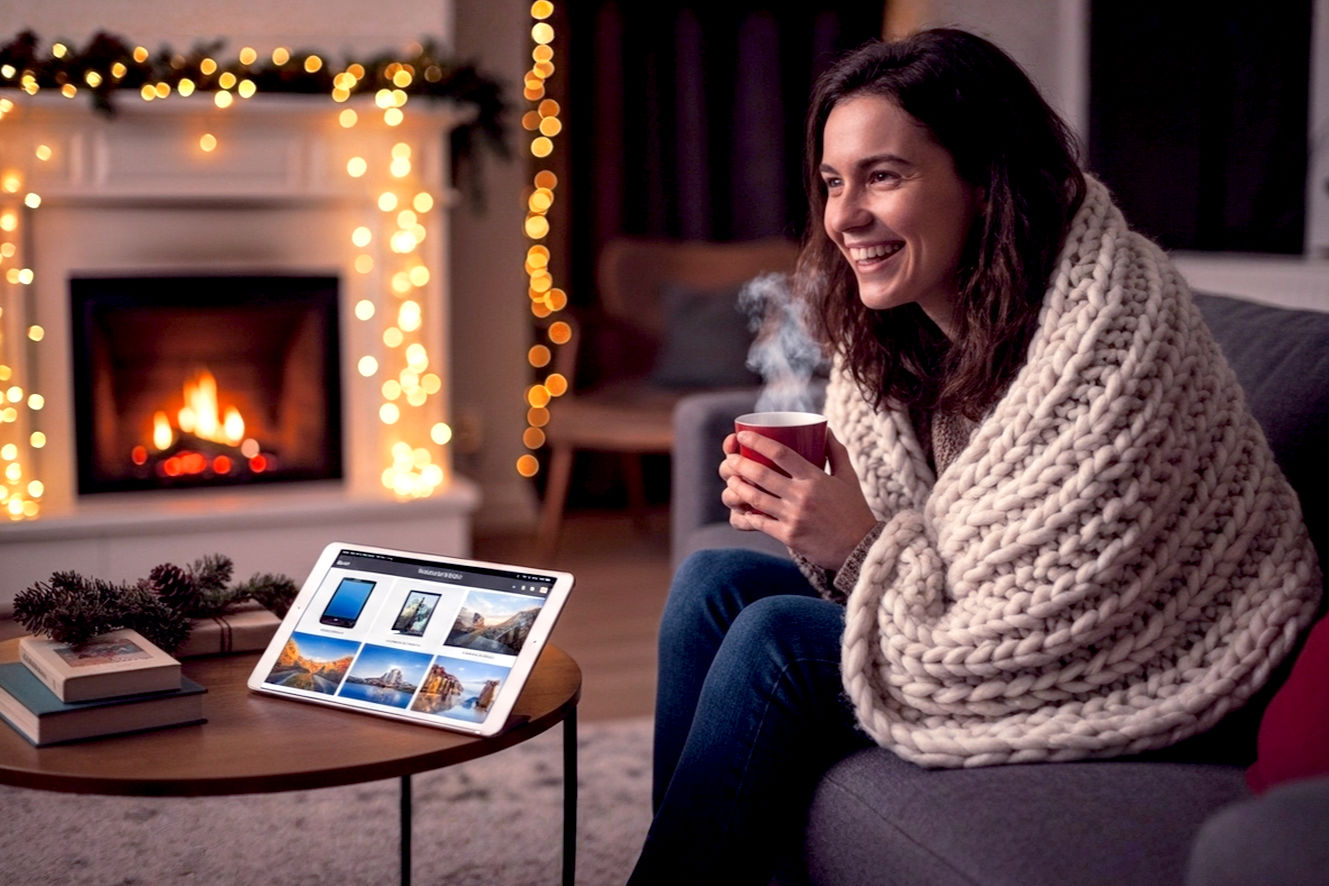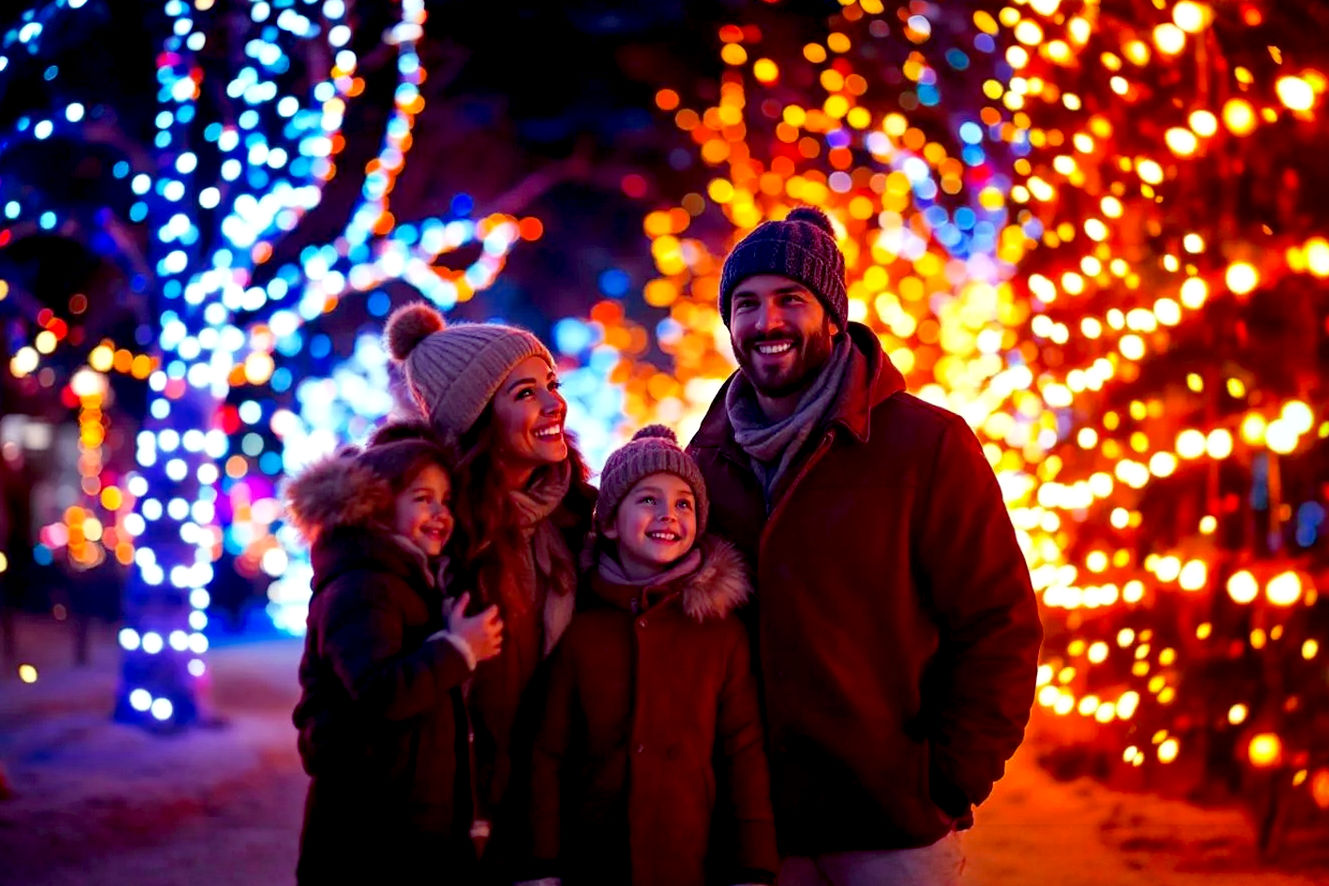This post may contain affiliate links. If you make a purchase through these links, we may earn a commission at no additional cost to you.
For millions of families across the United States, the Christmas Santa train ride isn’t just a holiday outing; it’s a cherished annual pilgrimage and a central pillar of the festive season. This experience, often set against a backdrop of snowy landscapes and historic rail yards, offers a unique blend of nostalgia, holiday magic, and a physical journey that transports passengers—both young and old—into a world of wonder. It’s a multi-sensory adventure where the rhythmic clickety-clack of the wheels on the rails, the scent of hot cocoa, and the sight of twinkling lights create an atmosphere you just can’t replicate.
This comprehensive guide is your ultimate resource, designed to meticulously unpack every facet of the Santa train phenomenon, from the simple joy of meeting Santa to the complex, behind-the-scenes work that makes the magic possible. We’ll delve into its fascinating history, explore the different types of rides available, and provide an encyclopedic level of detail on how to plan your perfect family outing.
The Different Types of Holiday Train Experiences: Choosing Your Journey
The term “Santa train” covers a surprisingly wide array of experiences, each with its own unique flavor and appeal. Knowing the distinctions is the first and most crucial step in planning a trip that perfectly fits your family’s wishes. Let’s break down the most popular types, detailing their core concepts, key features, and what to consider when making your choice.
Polar Express-Themed Rides
- Description: This is the most iconic and theatrical of all holiday train experiences. Based on the beloved 1985 book by Chris Van Allsburg and the subsequent 2004 film, these rides are highly immersive, narrative-driven productions. The goal is to fully recreate the magical journey to the North Pole, transforming a simple train ride into a living, breathing story. Characters from the book and film, such as the Conductor, the Hobo, and the chefs, are brought to life by professional actors.
- Key Features: The experience is built around a sequence of events familiar to fans. Upon boarding, children present their golden tickets to the Conductor, who punches a letter or symbol into them. As the train embarks, chefs serve hot cocoa and cookies while leading passengers in a rousing sing-along of Christmas carols. The story of The Polar Express is often read aloud, either by a character or through an audio system. The highlight is the arrival at the “North Pole,” where Santa Claus boards the train and moves through the cars. The grand finale is Santa presenting each child with a silver sleigh bell, just like in the story, as a symbol of believing. Typical journey lengths are around 60 to 90 minutes.
- Considerations: Because of the immersive nature, passengers are strongly encouraged to wear pajamas to match the characters in the story, which adds to the fun and fantasy. This type of ride is generally more expensive than a traditional Santa excursion due to the extensive theatrical production, licensed intellectual property, and larger staff of performers. It’s often best for children who are already familiar with the story and are old enough to appreciate the theatricality, typically ages 3 and up.
- Why choose this type: You should choose a Polar Express-themed ride if your family loves the book or movie and you want a highly produced, deeply immersive, and narrative-driven Christmas experience that will feel like stepping directly into the story.
Traditional Santa Excursions
- Description: This experience focuses on a timeless, classic Christmas feel, placing the emphasis squarely on a direct and meaningful interaction with Santa Claus. These rides often operate on local or heritage railways and offer a more relaxed, less theatrical atmosphere than their Polar Express counterparts. The charm lies in its simplicity and focus on the core holiday tradition.
- Key Features: The most notable feature is Santa’s personal visit to each child. Instead of a large, choreographed event, Santa and his elves typically walk through the train cars, greeting each family individually. This often allows for more one-on-one time, a chance for children to talk to Santa directly, and a great opportunity for a close-up photo. Children usually receive a small gift, often a candy cane, a small toy, or a book, from Santa or an elf. Accompanying activities might include storytelling, carolers moving through the cars, or basic treats like cookies. These rides are often shorter, sometimes lasting only 30 to 60 minutes.
- Considerations: Traditional excursions are particularly well-suited for very young children who might be overwhelmed by the loud music, theatrical lighting, and intense energy of a Polar Express ride. The shorter duration is also a major advantage for toddlers with limited attention spans. Prices are typically more affordable, making them an excellent choice for a family on a budget.
- Why choose this type: This is the perfect option if your primary goal is for your child to have a direct, personal, and authentic-feeling encounter with Santa in a cozy, relaxed setting, focusing on the simple, classic magic of Christmas.
Scenic and Historical Holiday Trains with Santa
- Description: These trains offer a dual experience, combining the festive fun of meeting Santa with the unique opportunity to ride a historic train through a scenic landscape. Operated primarily by heritage railways and museums, these excursions cater not only to families but also to railfans and history enthusiasts. The “star” of the show is often the locomotive itself, a preserved steam or diesel engine.
- Key Features: A defining feature is the historic rolling stock. Passengers might ride in beautifully restored passenger cars pulled by a vintage steam locomotive that puffs billows of smoke into the winter air, or a classic diesel engine with its characteristic horn. The journey’s focus is as much about the breathtaking window views of winter scenery as it is about Santa. Narration is often provided, detailing the history of the railroad, the locomotive, or the landmarks along the route. Santa is still a central figure, but his role might be a bit more integrated, with him moving through the cars to greet children, often as a special passenger on the journey rather than the sole purpose of the trip.
- Considerations: These rides can sometimes be longer, as they cover more track to showcase the scenery, and this might be a factor for families with very small children. They also appeal to a broader audience; a family with a train-loving parent and a child who loves Santa can find a perfect compromise here. The level of “Christmas magic” can vary widely from operator to operator, depending on the heritage railway’s focus.
- Why choose this type: This is the ideal choice for families who want a festive experience that also offers educational value, appeals to an interest in history or rail travel, and provides an opportunity to see stunning natural landscapes from a unique perspective.
Dinner or Special Event Trains (e.g., themed meals, adult-only nights)
- Description: These are elevated, specialized train rides that go beyond the basic excursion. They are often longer, more formal, and feature specific themes or dining options, catering to a different audience or a special occasion.
- Key Features: The central element is usually a multi-course meal, served directly at your table in a dining car. These can range from a family-friendly buffet to a formal, multi-course dinner with fine china. Entertainment is also a key feature, often including magicians, professional carolers, or other performers who move through the cars. Some specialized rides are adults-only, offering an escape from the family-focused crowd, with offerings such as cocktails, wine pairings, and a more sophisticated atmosphere. Specific themes might also include New Year’s Eve rides or other unique holiday-themed events.
- Considerations: These are typically the highest priced options due to the longer duration, formal dining, and higher level of service and entertainment. They are best suited for older children, couples, or groups of friends looking for a unique and memorable holiday outing. Age restrictions are common on adult-only rides, so it’s essential to check before booking.
- Why choose this type: Select a dinner or special event train for a luxurious, extended, or adult-focused holiday experience that combines the charm of rail travel with fine dining and specialized entertainment.
Planning Your Magical Journey: A Step-by-Step Guide
Timing Your Booking: The Golden Window
The most critical factor in securing a spot on a popular Santa train is when you book your tickets. These experiences, particularly the Polar Express-themed ones, sell out with lightning speed.
- When to book: Don’t wait for the fall. For the most popular rides, the golden window for booking is 6 to 12 months in advance. Tickets for the upcoming holiday season often go on sale in late winter or early spring. For example, tickets for a December ride might be released in March.
- Ticket Release: To stay ahead, you must do your research. Find the specific train operator’s website and sign up for their email newsletter. This is often the primary way they announce the exact date and time tickets will go on sale. Be prepared on that day, as the most desirable timeslots—like evening rides and those closer to Christmas—can sell out within minutes.
Understanding Ticket Classes and Seating
Most train operators offer a tiered ticketing system, and understanding the differences can greatly enhance your experience.
- Types of tickets: You’ll typically find standard coach, premium coach, and sometimes first-class or Presidential-class options.
- Benefits: Standard coach is the most affordable and provides a basic seat and access to the main experience. Premium seats often come with more comfortable seating, a dedicated car, and sometimes a few extra perks like a special treat. First-class or Presidential-class tickets are the most expensive and can include private cabins or tables, multi-course meals, exclusive gifts, and dedicated service. They provide a more intimate and less crowded experience, which can be a significant advantage, especially for larger families.
What to Wear: From Pajamas to Parkas
Your attire can significantly impact your comfort and the overall feel of the experience.
- Polar Express Specifics: If you’re on a Polar Express ride, wearing pajamas is part of the fun. Many families go all out, with matching sets, slippers, and robes. The vast majority of passengers will be in pajamas, so you won’t feel out of place. This is a crucial detail to get right for the full, immersive effect.
- General Advice: Even if you’re inside a warm train car, you’ll likely be waiting on an outdoor platform. It’s always best to dress in layers. A warm jacket or coat, a hat, and gloves are a must. Many people find themselves shedding layers once they’re seated and the train gets going. Don’t forget comfortable shoes, as you may be standing for a short period while boarding.
Preparing the Kids: Setting Expectations
A little preparation can go a long way in ensuring a smooth and joyful journey.
- Pre-ride Activities: For a Polar Express ride, read the book aloud or watch the movie a few times in the weeks leading up to the trip. This builds anticipation and helps children understand the story they are about to become a part of.
- Managing Expectations: Be sure to have a conversation with your children about the experience. Explain that the train is a real, moving vehicle and that the ride will take a specific amount of time. For very young or shy children, let them know that Santa and the characters will be visiting them and that it’s okay to say hello from their seat if they’re not ready to get too close. The more they know what to expect, the less likely they are to be overwhelmed.
Capturing the Moment: Photography Tips
Getting a great photo can be tricky. The unique environment of a train requires some special considerations.
- On-board Challenges: The lighting inside a train car can be dim and inconsistent, often casting harsh shadows. The train is also in constant motion, which can lead to blurry photos, especially with a slow shutter speed. Additionally, space is limited, so you’ll be working in tight quarters.
- Pro Tips: For the best results, use a camera with a fast lens (one that lets in a lot of light, like f/1.8 or f/2.0) and turn off the flash to avoid washing out your subjects and creating unwanted reflections. Instead of focusing on posed, stiff photos, try to capture candid moments: the look on your child’s face as they sip hot cocoa, their eyes wide with wonder as Santa walks by, or their hand reaching out for the silver bell. This approach often yields the most authentic and memorable images.
The Journey Itself: What to Expect Onboard
Arrival and Boarding: The First Glimpse of Magic
The festive atmosphere begins long before you set foot on the train. The boarding station is often transformed into a winter wonderland, with twinkling lights, festive garlands, and the sounds of Christmas music filling the air. You might spot costumed characters like conductors and elves roaming the platform, setting the stage for the adventure. After you check in, you’ll be directed to the correct boarding platform. The boarding process is usually well-organized and timed, so it’s important to arrive a bit early to get settled and take in the sights. Once you’re in your car, an attendant will help you find your assigned seat, and the real journey is about to begin.
The Ride’s Narrative: The Core Experience
Once the train pulls away from the station, the main event begins. This is where the specific theme of your ride comes into play. On a Polar Express, the conductor will come by to check your tickets, and the chefs will start their choreographed dance to serve hot cocoa. On a traditional train, you might have carolers or storytellers move through the cars, leading festive sing-alongs. The journey is meticulously planned to build anticipation, with festive music, light displays along the route, and a narrative that guides you toward the magical destination.
The Main Event: The Santa Interaction
This is the climax of the journey for most children. As the train nears its turnaround point (or a designated “North Pole”), Santa Claus will make his grand appearance. The excitement is palpable as he works his way through the cars, accompanied by his elves. For most children, this is their first opportunity to have a face-to-face interaction with Santa for the year. He will take the time to greet each child, listen to their wishes, and hand them a special gift. This is your prime moment for a photo, whether it’s a quick shot of the child on Santa’s knee or a candid of the big man handing over a small present.
Treats and Souvenirs
A major part of the Santa train experience is the festive fare. Hot cocoa and cookies are a time-honored tradition on many rides, especially those with a Polar Express theme. The small gift from Santa—the coveted silver bell on a Polar Express ride or a simple toy on a traditional train—serves as a tangible reminder of the journey. Many operators also offer souvenirs for purchase, such as commemorative mugs, ornaments, or other themed merchandise, allowing you to take a piece of the magic home with you.
The Enduring Legacy and History of Santa Train Rides: More Than Just a Journey
Roots in Railroad History and Community Outreach
The tradition of Santa train rides didn’t start with a movie; its roots are deeply embedded in the history of American railroads and their role as community hubs.
- Early Promotions: In the early 20th century, railroads were the lifeblood of many towns, and companies sought to build goodwill and promote passenger travel. They often organized holiday events, such as bringing Santa to the local station on a decorated train car. He would arrive to great fanfare, meet with children, and distribute small gifts, creating a sense of community and cementing the railway’s positive role in the town. These weren’t formal “rides,” but they laid the groundwork for what was to come.
- Philanthropic Origins: A more direct precursor to the modern Santa train is the Clinchfield Santa Train. This unique and deeply philanthropic tradition began in 1943 when a Clinchfield Railroad engineer, in an act of kindness, distributed toys, clothing, and candy from the back of his caboose to children in the isolated Appalachian communities along his route. This simple gesture evolved into a massive, 110-mile-long Santa Train that, for over 80 years, has traveled through Kentucky, Virginia, and Tennessee, distributing over 15 tons of gifts and aid to thousands of people each year. This exemplifies the humanitarian aspect that has long been a part of the railway holiday tradition.
- Heritage Railways’ Role: Today, a vast majority of Santa trains are operated by heritage railways—nonprofit organizations dedicated to preserving and operating historic railroad equipment. For these organizations, the Santa train is more than just a festive event; it’s an economic lifeline. Revenue generated from these popular seasonal rides is crucial for their financial sustainability. Without the income from these events, many heritage railways wouldn’t be able to afford the costly and meticulous process of maintaining their historic locomotives and carriages, ensuring that a piece of our industrial past can be preserved and shared with future generations.
The “Polar Express” Phenomenon and Modern Evolution
- Impact of Book/Film: The landscape of Santa train rides was fundamentally and permanently changed by Chris Van Allsburg’s book, The Polar Express, and its cinematic adaptation. The film, in particular, introduced the concept of an immersive, theatrical, and narrative-driven experience. Train operators quickly realized the potential, and the first official licensed Polar Express-themed rides began to appear. The licensing is a complex and highly-regulated process, with operators paying a significant fee to use the official name, storyline, and branding. This allows them to create a standardized, high-quality, and deeply recognizable experience for consumers.
- Technological Integration: Modern technology has played a huge role in enhancing these experiences. While early rides relied on simple props, today’s trains often incorporate sophisticated audio-visual systems, with speakers in each car playing music and narration in sync with the journey. Strategic use of theatrical lighting and fog machines can create the illusion of a journey through the North Pole, while wireless microphone systems ensure that the Conductor’s voice is heard clearly throughout the train. This technology makes the magic more believable and more impactful than ever before.
- Diversification of Offerings: The success of the Santa train has led to a diversification of offerings to cater to a wider audience. Operators now offer everything from the classic family ride to adults-only cocktail trains, sensory-friendly excursions for children with special needs, and special New Year’s Eve journeys. This evolution shows how the industry has adapted to meet modern demands, proving that the magic of a train ride isn’t just for children.
The Unseen Work: Behind the Scenes of the Magic
The Dedicated Volunteers and Staff
While a ride on a Santa train lasts only an hour or two, the magic is the result of thousands of hours of work, often performed by dedicated volunteers. These are the people who are the true engine of the operation.
- The People: From the train engineers and firemen to the car attendants, ticket agents, and the actors who play Santa and his elves, an enormous team is required for each trip. Many of these individuals, especially on heritage railways, are unpaid volunteers who dedicate their time and passion to preserving a piece of history and bringing joy to others. They spend countless hours prepping the trains, rehearsing their roles, and ensuring every aspect of the experience is perfect.
- The Roles: The crew is made up of highly specialized individuals. The engineer is responsible for safely operating the locomotive, a task that requires extensive training and certification. The fireman (on a steam engine) is responsible for feeding the firebox to create steam, a physically demanding role. The conductors and car attendants not only manage tickets and boarding but also serve as key entertainers and safety officers throughout the trip. The professional actors and performers who fill the roles of Santa, elves, and conductors work tirelessly to create a believable and immersive atmosphere for every single passenger.
Maintenance of Historic Rolling Stock
Preserving and operating a historic train is an incredibly complex, costly, and time-consuming endeavor. A Santa train ride is often the most visible and lucrative result of this painstaking work.
- The Challenge: Historic steam and diesel locomotives require constant, meticulous maintenance. Parts for these century-old machines are no longer in production and must be custom-fabricated, often by skilled artisans. The most significant maintenance task for a steam locomotive is the boiler inspection, which is required by federal law and can cost hundreds of thousands of dollars for a major overhaul, sometimes reaching a cost of over $1 million depending on the work required. Similarly, vintage passenger cars need continuous restoration, from replacing worn-out wheels and axles to re-upholstering seats and repairing fragile interiors.
- Funding: The revenue generated from a single Christmas season often provides the majority of the annual budget for a heritage railway. This income directly funds the essential maintenance, repairs, and restoration projects that keep these priceless pieces of history running. When you purchase a ticket for a Santa train ride, you’re not just paying for a fun outing; you’re also making a direct contribution to preserving a piece of our national heritage.
The Logistical Challenges of a Holiday Operation
Running a Santa train is an enormous logistical puzzle. Managing thousands of passengers, multiple daily excursions, and a large cast and crew requires meticulous planning and execution.
- Ticketing & Scheduling: Operators must create a scheduling system that allows them to run multiple trips a day, each with its own specific boarding time and route. They need to manage online ticketing systems that can handle a massive surge in traffic when tickets go on sale. On the day of the ride, they must organize the flow of thousands of people, directing them to the correct cars and ensuring a smooth and safe boarding and deboarding process.
- Safety First: Because these are real, operating railroads, safety is the number one priority. A dedicated staff ensures that every aspect of the operation—from the condition of the tracks and rolling stock to the training of the crew and the safety instructions for passengers—adheres to strict federal and state regulations. This ensures that every magical moment is also a safe one.
The Broader Impact: Economic Benefits and Community Spirit
Driving Local Tourism and Revenue
A Santa train ride isn’t just a boon for the train operator; it’s a powerful economic engine for the surrounding community.
- Economic Multiplier Effect: These events have a significant economic multiplier effect. A family traveling to take a Santa train ride from out of town doesn’t just buy a ticket. They often book a hotel room, eat at local restaurants, shop at local stores for souvenirs or gifts, and purchase gas. This influx of visitors provides a substantial boost to the local economy, helping small businesses thrive during the holiday season. The revenue generated can make a meaningful difference to towns that might otherwise see a lull in tourism during the winter.
- Seasonal Job Creation: To handle the massive increase in demand, train operators and surrounding businesses often create temporary or seasonal employment opportunities. These can range from actors and performers for the train, concession staff, gift-wrapping volunteers, security personnel, and extra staff for local hotels and restaurants. This provides a welcome source of income for many people during the holidays.
Fostering Community and Preserving Heritage
- Cultural Tradition: For many communities, the Santa train has become a cherished and deeply ingrained annual tradition. Generations of families return year after year, with grandparents bringing their children and their grandchildren to share the same magical experience they had. This shared cultural tradition fosters a unique sense of community pride and gives people a common festive experience to look forward to and bond over.
- Educational Value: Beyond the magic, the Santa train serves an important educational role. It provides a fun, engaging, and memorable way to introduce a new generation to the history of rail travel. Children who ride a steam locomotive and see a fireman shoveling coal are getting a direct, hands-on lesson in how our country was built. This indirect educational value helps to instill a respect for history and the importance of preservation.
Navigating Common Challenges and FAQs
What if my child is afraid of Santa?
It’s completely normal for young children to be intimidated by a larger-than-life figure like Santa Claus. The best approach is not to force it. Let them meet Santa from the safety of your lap or seat. It’s okay if they don’t want to sit on his knee. The most important thing is that they have a positive, pressure-free experience. Many operators and performers are well-versed in dealing with shy children and will interact with them from a distance.
What about accessibility for wheelchairs or special needs?
Most heritage railways and train operators make an effort to be accessible, but the age of the historic equipment can present challenges. It is absolutely critical that you contact the specific train operator directly before booking to inquire about their accessibility accommodations. They can tell you if their cars can accommodate wheelchairs, if there is a ramp for boarding, and if they offer special sensory-friendly rides with reduced light and sound. Never assume; always check in advance.
What if it snows or the weather is bad?
Unless a ride is specifically canceled due to extreme, dangerous weather, most Santa trains run rain or shine (or snow!). The train itself will be warm and comfortable inside. However, keep an eye on the weather forecast for your area and be prepared for cold temperatures or precipitation on the platform. In the event of a cancellation, operators will typically notify you via email and provide instructions for refunds or rescheduling.
Is there food available on board?
This varies widely depending on the type of ride. Polar Express and other themed rides almost always include a treat like hot cocoa and cookies. However, other excursions may not. If you or your children have dietary restrictions, it’s best to bring your own snacks and drinks, as on-board options may be limited. If you are on a dinner train, your meal will be a central part of the experience. Again, always check the specific details on the train operator’s website for your chosen trip.

